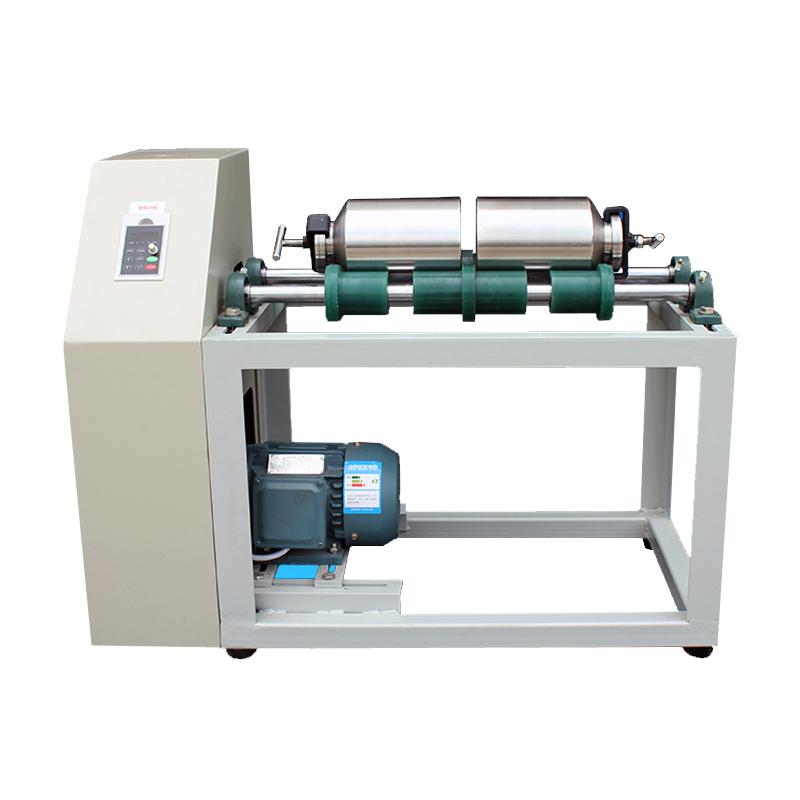Laboratory drum tank mill is a kind of equipment commonly used in laboratory for sample grinding, mixing, homogenization and other experiments, mainly composed of tank body, motor, transmission system, grinding body and so on.Laboratory drum tank mills usually grind, mix, or homogenize samples by means of tank rotation and abrasive grinding.The tank is usually made of stainless steel or ceramic, which can be adapted to the grinding requirements of different samples.
The grinding body of laboratory drum mill usually has different kinds of grinding ball, grinding rod or grinding ball plus grinding rod, which can be selected according to different experimental requirements.The selection and quantity, size and material of the grinding body will affect the grinding effect.
Laboratory drum mill is suitable for particle size analysis, sample preparation, quality control and other fields, common applications include preparation of powder samples, preparation of solution samples, mixed samples, homogeneous samples and so on.It is widely used in chemistry, biology, medicine, material science and other fields of laboratory, is a very important laboratory equipment

How to select the type of drum mill in laboratory?
Selection method
Laboratory drum tank mill is a kind of equipment used for grinding, mixing, homogenization and other laboratory tests, usually used for particle size analysis, sample preparation, quality control and other fields.The following are some points of the selection of laboratory drum mill:
Type of mill: Common laboratory drum mill including ball mill, rod mill and oscillating mill.It is necessary to select the corresponding mill type according to the specific experimental requirements and sample properties.
Mill capacity: The capacity of laboratory drum tank mill is usually between tens of ml to several liters, and the corresponding capacity should be selected according to the needs of the experiment.In general, large volume mills can handle more samples, but require more abrasive bodies and are more complex to operate.
The material and size of the frosted body: the frosted body is an important part of the laboratory drum can mill, which plays a grinding role. It is necessary to choose the appropriate material and size of the frosted body according to the properties of the sample and the experimental requirements.Common frosted body materials are ceramic, stainless steel, glass, and the size and number of the frosted body will also affect the grinding effect.
Grinding time and speed: the grinding time and speed of the laboratory drum can mill are also important factors affecting the grinding effect, it is necessary to choose the appropriate time and speed according to the specific experimental requirements.Generally speaking, longer matting will result in finer particles, while higher speed matting will increase crushing force.
Other functions: Some laboratory drum tank mills may also have heating, cooling, vacuum and other functions, which need to be selected according to specific experimental requirements.
To sum up, the selection of laboratory drum mill needs to consider several factors, including the type of mill, capacity, material and size of the grinding body, grinding time and speed, etc., which need to be comprehensively considered according to specific experimental requirements.
